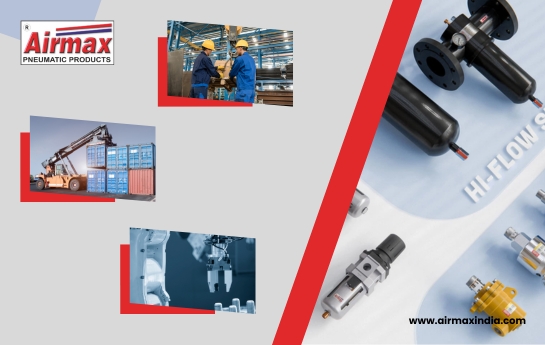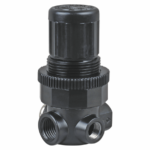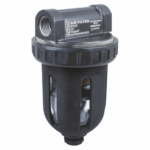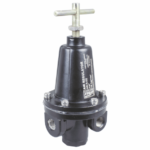Why Material Handling Systems Depend on Pneumatic Motion Devices

The foundation of material handling systems is accuracy, speed, and dependability. Every movement must be seamless and timely, whether you’re lifting pallets in a warehouse, sorting packages on a conveyor, or placing parts on an assembly line. Pneumatic motion devices make this possible.
These systems use compressed air to power movement, delivering steady, controlled motion that keeps operations efficient. The air cylinder, a small but effective part that transforms air pressure into mechanical action, is at the center of this arrangement.
Pneumatic systems are often faster, safer, and easier to maintain than traditional mechanical systems. We’ll talk about why material handling systems depend on pneumatic motion devices.
What Are Devices for Pneumatic Motion?
Pneumatic motion devices use compressed air to make linear or rotary motion. This lets machines accurately move, lift, push, or position things. In fields like packaging, logistics, food processing, and automation, you can find them.
The pneumatic cylinder is the most common type of this. It turns the energy in air into controlled mechanical motion. The idea is simple: when pressurized air comes into the chamber, it moves a piston, which always and reliably turns machinery on and off.
Important Parts of a Pneumatic Cylinder
A typical pneumatic cylinder has a tube, piston, rod, and end caps.
There is air pressure on the piston, which makes it move forward. Think of it like the plunger in a syringe. The rod sends that motion outward, moving the load or doing what needs to be done. These parts work together to turn the power of compressed air into movement that can be seen and used.
How Pneumatic Cylinders Generate Motion
The working cycle is easy to understand. One side of the cylinder gets compressed air, which moves the piston. Depending on the design, the piston either comes back with the help of a spring (single-acting) or air pressure on the other side (double-acting). Machines can precisely lift, push, or sort items because they can repeat this controlled motion. This is a big reason why they’re so popular in material handling systems.
Types of Pneumatic Cylinders in Material Handling
Single-Acting vs Double-Acting Cylinders
In a single-acting cylinder, air moves the piston in one direction, and a spring moves it back the other way. When you need to do light work, like basic lifts or pushing, this is the best tool for the job.
A double-acting cylinder, on the other hand, moves in both directions with air. It works better for continuous tasks like packaging lines or conveyor systems because it is faster and gives you more control. What’s the trade-off? A little more complicated, but more accurate and long-lasting.
Also know about “How a Double-Acting Pneumatic Cylinder Works.”
Rodless and Compact Cylinders
Rodless cylinders work great in places where space is limited. They get rid of the outside rod, which makes it possible for long-stroke motion in a smaller space. This is great for sliding applications or narrow conveyors.
Other than that, compact cylinders are made for machinery setups that don’t have a lot of room. You’ll often see them in automated sorters or compact pallet systems. Both designs offer flexible, efficient motion for modern automation environments.
Advantages of Using Pneumatic Motion Devices in Material Handling
Increased Speed and Productivity
Pneumatic cylinders operate quickly and repeatably, helping systems move materials faster. In automated pallet pushers or sorting lines, this directly boosts throughput and minimizes downtime.
Safety and Reliability
Since pneumatic systems use air instead of electricity, they eliminate electrical hazards and reduce risks in wet or hazardous environments. Their controlled motion also protects delicate products and prevents operator strain.
Precision and Flexibility
Adjusting stroke length or pressure is easy, allowing one setup to handle multiple product types or sizes. Whether positioning items for packing or loading, the motion stays consistent and accurate.
For a detailed guide on determining the stroke length of pneumatic cylinder for your application, check out our blog post: “How to Calculate Stroke Length.“
Real-World Applications in Material Handling Systems
Conveyor Systems
Pneumatic cylinders guide, push, or stop products along conveyors. They improve product flow and minimize human intervention, essential for large-scale material transfer.
Sorting and Packaging Lines
In packaging plants, pneumatic devices handle repetitive movements like sorting parcels or transferring items between stations, all with consistent speed and precision.
Automated Palletizing and Lifting
These cylinders drive lifters or pushers that stack products uniformly, improving efficiency and reducing manual workload.
Handling Fragile or Heavy Items
Because pneumatic motion is soft and controllable, it’s ideal for delicate goods, from glass bottles to boxed electronics, reducing the chance of damage.
How to Select the Right Pneumatic Cylinder
Consider Load, Stroke, and Speed
Choose a cylinder capable of handling your material’s weight and movement distance. The correct stroke and speed settings ensure smooth, efficient operation.
Material and Compliance Factors
For durability, go with stainless steel or corrosion-resistant materials, especially in harsh or humid environments. This ensures long service life and reduced maintenance costs.
Standard vs Custom Solutions
While off-the-shelf cylinders fit most general tasks, custom-engineered options can address specific layout or performance needs, ensuring seamless integration into your handling system.
Also, explore more about cushioning in pneumatic cylinders, its types, benefits, and applications.
Maintenance and Long-Term Performance Tips
- Inspect for leaks or air loss regularly.
- Keep the cylinder clean and lubricated to prevent friction.
- Replace worn seals or rods promptly.
Routine maintenance helps preserve performance, extending the life of your pneumatic components and reducing downtime across material handling lines.
Future Trends in Pneumatics for Material Handling
Tomorrow’s pneumatic systems are becoming smarter and more connected. Expect sensor-equipped cylinders that predict maintenance needs and integrate with IoT dashboards for real-time performance tracking.
Manufacturers are also developing compact, energy-efficient designs that deliver the same force with less air consumption, driving sustainability without compromising speed or reliability.
Conclusion
From conveyors to robotic palletizers, pneumatic motion devices form the backbone of efficient material handling. They bring together speed, safety, precision, and adaptability, all while keeping operations cost-effective.
Explore the high-performance range of pneumatic cylinders from Airmax Pneumatics, designed to elevate your material handling systems. Upgrade your efficiency today with pneumatic solutions that move your business forward.
For expert guidance or to request a custom solution, feel free to Contact Us today.





